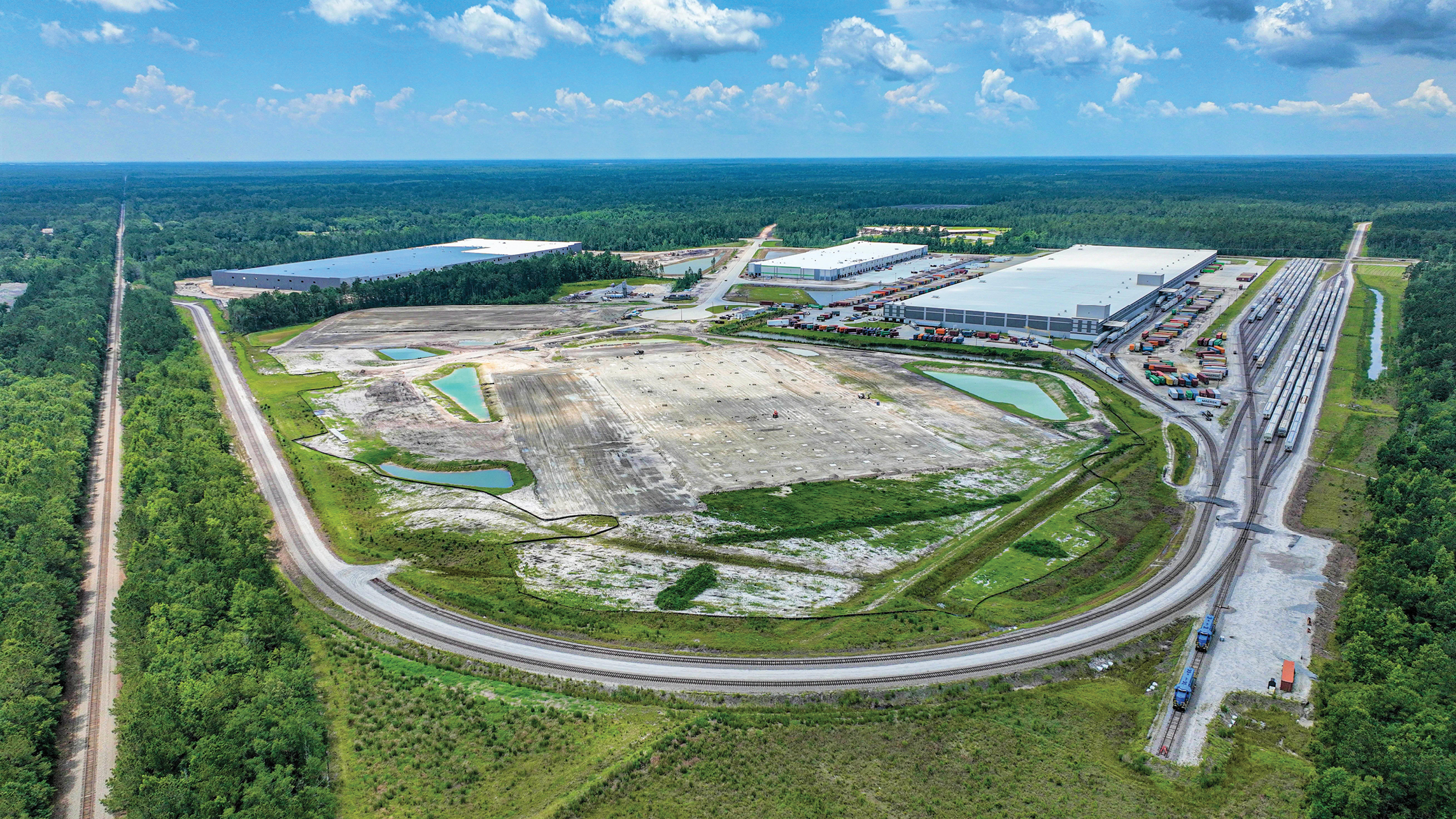Ports are scrambling to find space. Pop-up warehouses and lay-down yards are filling up as fast as they materialize. It’s not forecast to end anytime soon, say reports from every corner. So just as water seeks its own level, the flood of logistics space demand is uncovering new, promising markets.
Cushman & Wakefield’s Q2 2022 report released in July revealed “another record-setting quarter with demand continuing to outpace supply for the seventh quarter in a row,” driving vacancy to a new all-time low of 3.1% as the quarter saw overall absorption of 120.4 million sq. ft., with 699 million sq. ft. of industrial space under construction — up by nearly 47% over the total under construction at mid-year 2021.
“While this was the first quarter in 18 months that leasing activity dipped below 200 million square feet, it was largely driven by the fact that there simply isn’t space to lease,” said Cushman & Wakefield Americas Head of Logistics & Industrial Research Carolyn Salzer. “Given the robust construction pipeline and healthy market conditions, industrial leasing is on track to see another banner year.”
“We’re starting to see a trend back to building on spec versus build-to-suit, which is something to keep an eye on,” Salzer observed. “However, with such low vacancy and insatiable demand, the sector’s overall outlook continues to show strong fundamentals throughout the remainder of 2022 and beyond.”
Five Markets to Watch
Earlier this year, Salzer’s colleague Jason Price, senior research director, U.S. Industrial, examined key metrics from 2019 through 2021 across the 81 industrial markets Cushman & Wakefield tracks. The result was the June report “Five Industrial Markets to Watch — The Unusual Suspects,” where he cast the spotlight on five emerging locations outside of primary markets.
“Phoenix, Nashville, Columbus, Salt Lake City and Savannah rank as the top emerging industrial real estate markets in the country,” Price wrote. “These cities rank in the top 15 in three or more of the major real estate key performance indicators (KPIs).” Among the KPIs studied: absorption, new tenant demand, vacancy, rent growth, construction pipeline and deliveries, population growth, corporate moves, GDP growth and infrastructure investment. “Our two honorable mentions are Boise and Denver. While these markets didn’t rank high enough in most of the KPI categories, their recent growth and performance warranted their inclusion as markets to watch.”

Industrial here is defined as warehouse, manufacturing, flex, and office-services space, Price tells me, “although warehouse makes up the bulk of it.” Here are some of the report’s key takeaways by market, followed by a Q&A conducted by email with Price in late July.
Phoenix, Arizona
Rankings: No. 7 Absorption
No. 7 Completions
No. 9 New Leasing
No. 8 Average Construction Pipeline
Remarks: “Phoenix is now the fifth largest city in the nation with 1.8 million people and is growing at 1.5% annually. The Phoenix metro area boasts a population of 4.7 million and is projected to grow another 5.1% through 2026. Additionally, 2020 real gross domestic product (GDP) in the metro area amounted to $253.5 billion, up 70% from 20 years earlier. Demand has been vigorous with more than 57 million sq. ft. (msf) of leasing driving 51 msf of industrial space absorbed from 2019 through 2021, placing the market among the top in the nation for both. Its proximity to West Coast markets and ports makes Phoenix an attractive alternative for occupiers over markets like L.A. and the Inland Empire as rents are less expensive and space options are more abundant. Like the remainder of the nation, rents are on the rise, but remain significantly cheaper than in markets along the West Coast.”
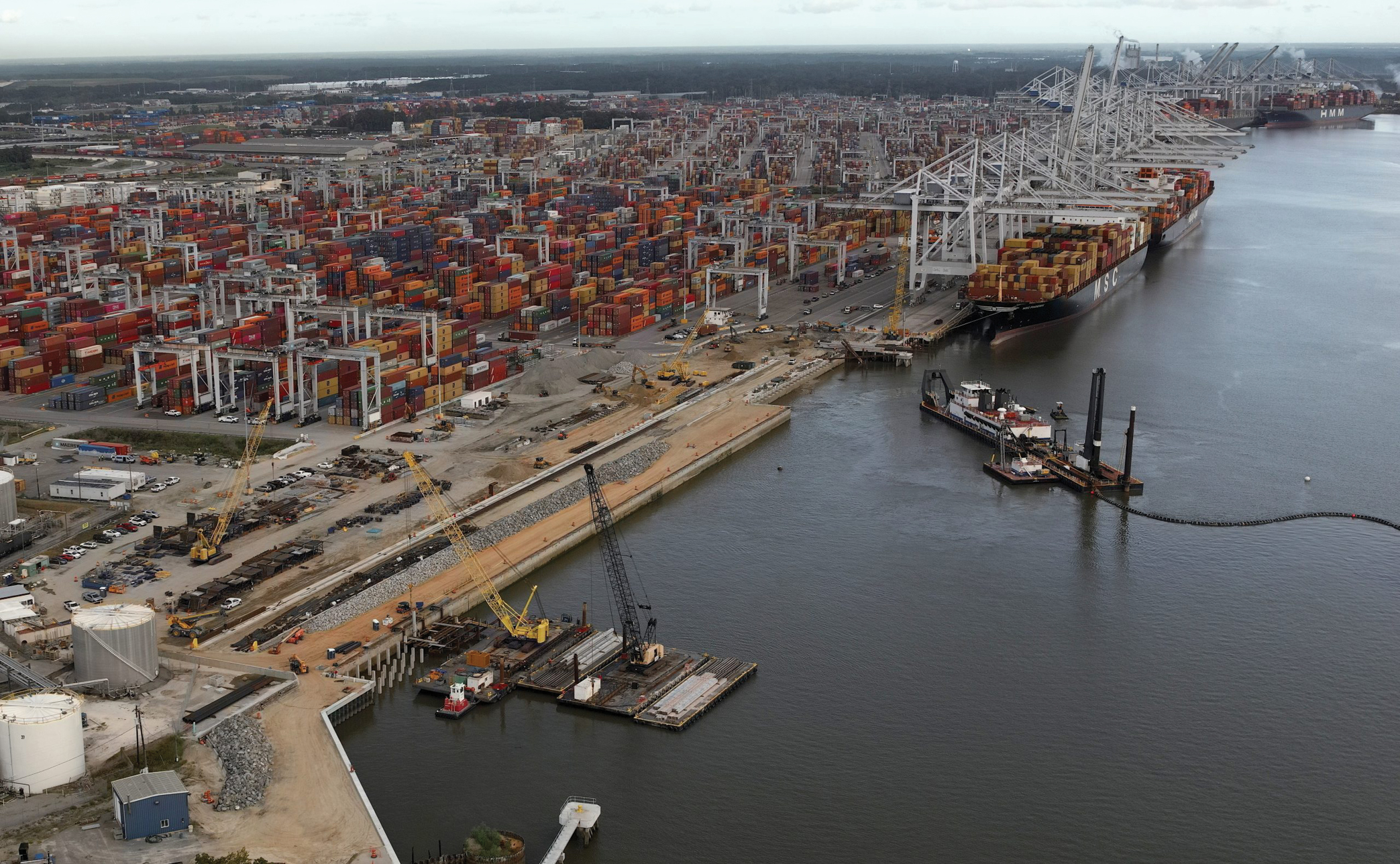
Healthy increases in cargo activity are driving industrial real estate activity in proximity to the Georgia Ports Authority’s Garden City Terminal in Savannah.
Photo courtesy of Georgia Ports Authority
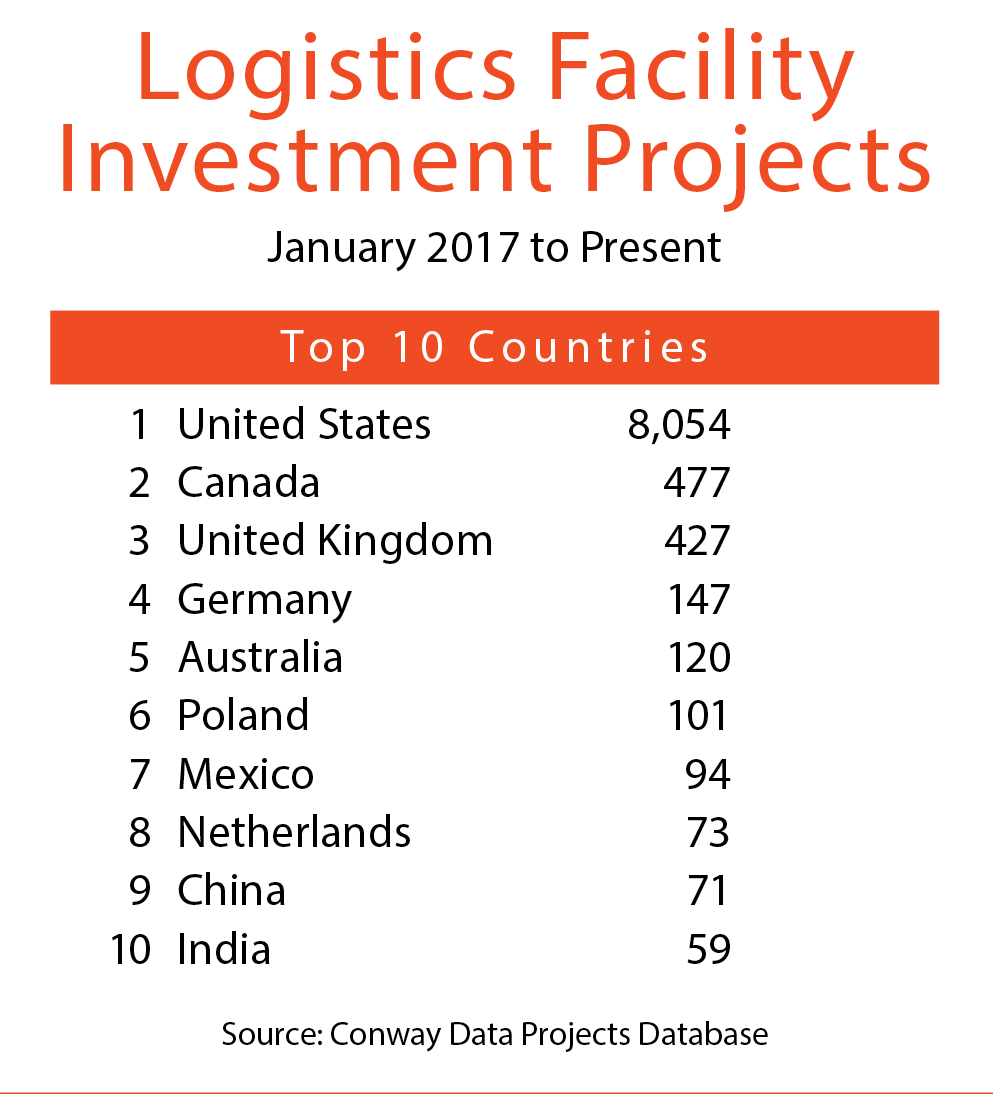 Columbus, Ohio
Columbus, Ohio
Rankings: No. 9 Absorption
No. 10 Completions
No. 11 New Leasing Activity
Remarks: “Study some of Columbus’ advantages and it becomes clear why this is an industrial market to watch. First, it’s located in a prime region in the Midwest at the intersection of I-70 and I-71, and just 70 miles from I-75. Second, in recent years, there has been a major push for industrial development near the Rickenbacker International Airport, a former air force base, now a major cargo-focused airport. Third, Columbus’ demographics have strengthened as the population has climbed by 9.3% over the last 11 years (versus 8.2% for the nation). Finally, there’s a relative affordability of doing business in Columbus, both in terms of the cost of real estate and labor. Meanwhile, Intel has plans to build two semiconductor facilities on almost 1,000 acres outside of New Albany. The sites will bring 3,000 jobs to the area and should draw interest from suppliers and partners to establish nearby facilities. Construction is anticipated to begin later this year. [Now it is more certain, after passage of the CHIPS Act in August. — Ed.]
“From 2019 through 2021, the Columbus warehouse market added more than 26 msf of new supply, responding to industrial demand growth. The inventory now boasts 290 msf of space, making it the 16th largest industrial market in the nation, with another 14 msf of product under development. Much of the space delivered in the 2019 to 2021 timeframe was speculative. However, major occupiers were behind some notable build-to-suit projects. Demand for new, Class A warehouses has been vigorous—95% of speculative buildings completed in 2021 were pre-leased prior to completion.”
Nashville, Tennessee
Rankings: No. 15 Absorption
No. 14 Completions
No. 9 Average Vacancy Rate
Remarks: “Nashville’s central location in the Southeast U.S. — intersected by three major Interstates — puts 12 million consumers within a two-and-a-half-hour drive of Music City. That geographical advantage bodes well for logistics and e-commerce users who need easy access to a large number of customers. Additionally, some major corporate announcements and relocations to Nashville, such as Alliance Bernstein, Amazon and Oracle, have had a trickle-down effect on the industrial market as more workers have migrated to the area. That’s driven more residential development, which in turn has spurred demand for construction materials and supplies, along with more consumer products.
“From 2019 to 2021, more than 19.0 msf of industrial product was absorbed, 7.0 msf of which occurred in 2021 alone. Since 2020, Amazon itself accounted for 52% of total absorption as the e-commerce giant expanded rapidly within the market. Broader tenant demand continued to yield robust totals with 9.5 msf leased in 2021, the majority of which was concentrated in Eastern and Southeastern submarkets. Significant deals leading that activity were inked by Wal-Mart, Chewy Inc., FedEx and Southerland Sleep. That elevated demand, coupled with tightening conditions, spurred developers to build almost 20 msf of new industrial product from 2019-2021, responding to the need for additional Class A warehouse space.”
Savannah, Georgia
Rankings: No. 12 Absorption
No. 11 Completions
No. 5 Average Vacancy Rate
Remarks: “Savannah’s GDP has reached almost $22 billion, up by 46% over the last 10 years (versus 19% for the nation). A major contributor to growth has been the Port of Savannah, which has recorded increasing trade volumes since 2017. As both the cumulative impacts of rapidly rising trade flows met limited supply, vacancy was already compressed prior to COVID-19 and the emergence of global supply chain issues. While the Georgia Ports Authority has seen congestion starting to ease as the number of ships waiting to dock started to decline late last year, the market remains extremely stretched. Future expansions at the Georgia ports will help ease delays as they open in the coming years. Savannah’s population has risen by 7.7% since 2016, compared to 3.7% for the nation and 4.9% for Georgia.
“As port activity surged, the local industrial market experienced unprecedented growth. Over the last three years, Savannah absorbed more than 24 msf of product while the inventory grew by another 25 msf. Amid the robust absorption totals, Savannah’s vacancy rate has dwindled to a mere 0.5%, one of the lowest in the nation. Developers have attempted to alleviate some of the pressure brought on by expanding construction, which now stands at a healthy 23 msf.”
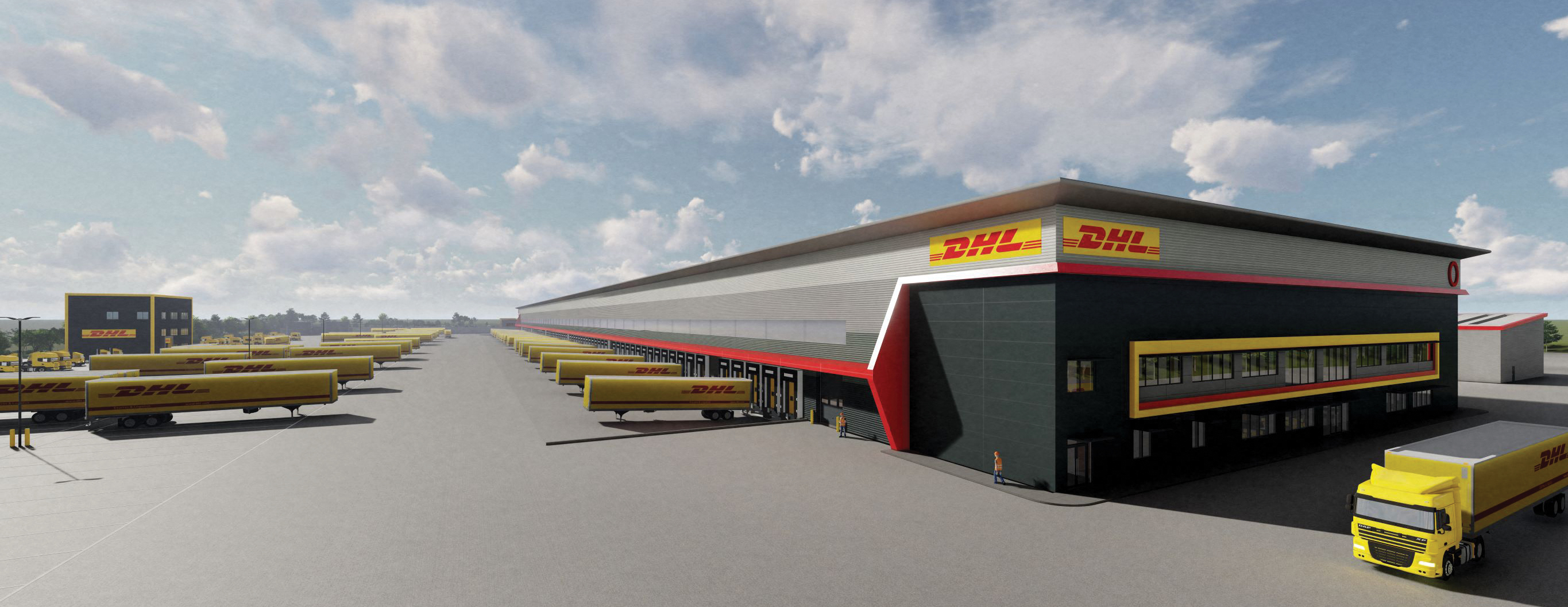
Nearly half of DHL eCommerce Solutions’ €560 million investment across its UK ecommerce operation, DHL Parcel UK, will occur at a new 269,100-sq.-ft., 600-job hub in SEGRO Park Coventry Gateway, located south of Coventry Airport.
Rendering courtesy of DHL
Salt Lake City, Utah
Rankings: No. 2 Rent Growth
No. 10 3-year Average Pipeline
Remarks: “A growing population and surging economy underpin Salt Lake City’s position in our markets to watch rankings. The metro area is home to roughly 1.2 million people, and Utah’s largest city has seen an annual population growth of approximately 1.0% since 2019, outpacing the national average. On the economic front, real GDP grew around 8.5% in 2021 and is expected to increase by another 4.1% in 2022. Looking ahead, from 2023 to 2025, the economy is expected to climb at an annual rate of 2.0%, led by manufacturing and real estate. The region also offers similar locational benefits as Phoenix, given its proximity to the West Coast markets (all of which are high rent markets). Salt Lake City offers additional accessibility to the Midwest as well.
“Over the past three years, Salt Lake City yielded strong rent growth with rents nearly doubling from Q4 2019 to Q4 2021, up 60% in that time. As of the first quarter of 2022, vacancy hit 1.9%, a new record low after averaging 3.6% over the past three years. Unsurprisingly, the tightness of the market has been driven by strong demand as over 28 msf of new leasing was recorded over the past three years. With deliveries totaling 15 msf for the same time, the market will need more space to help alleviate the downward pressure on vacancy. Fortunately, the pipeline is set to deliver 11 msf of new product over the next few years, but Salt Lake City will likely need more as demand persists.”
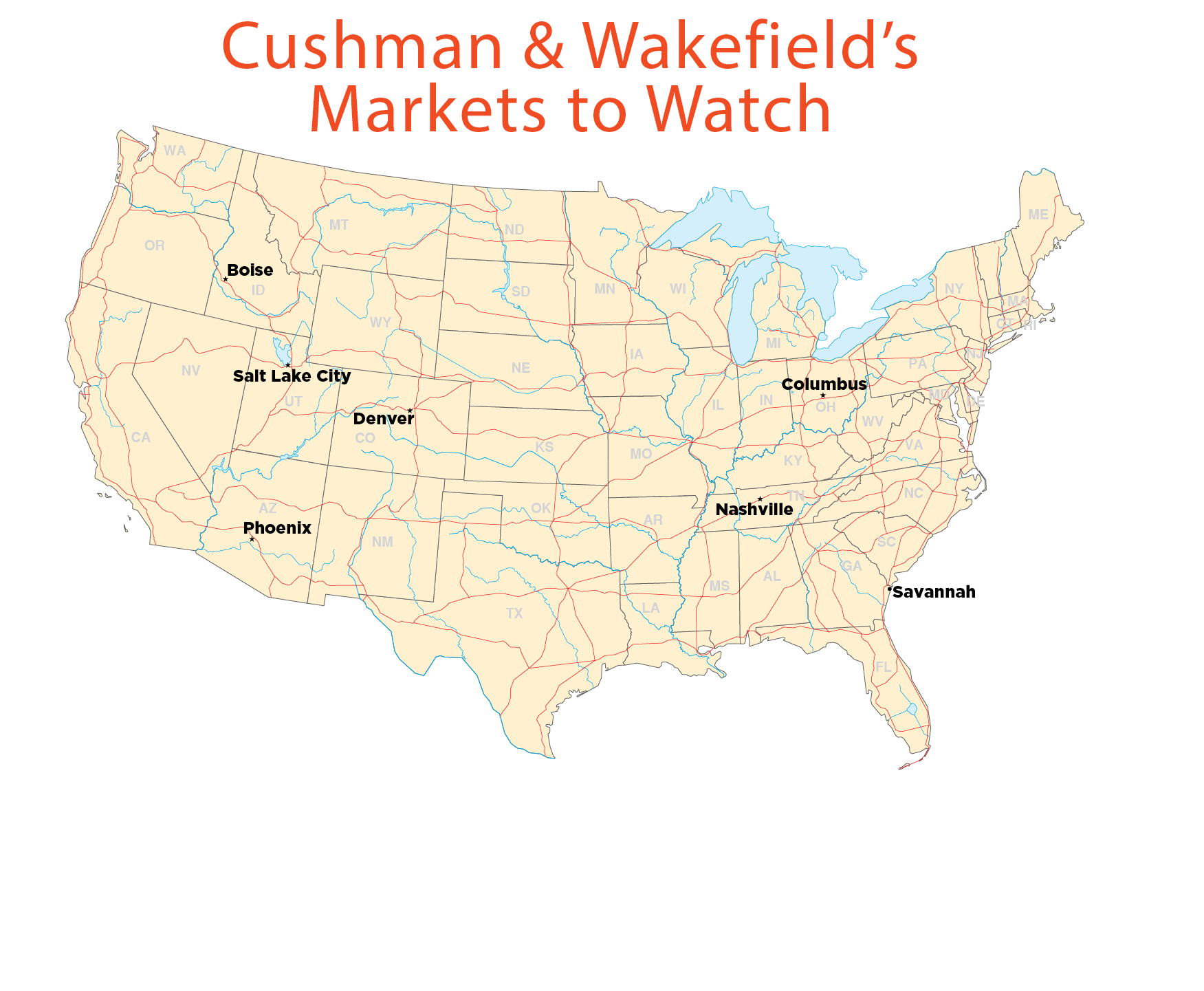
Honorable Mentions
Boise, Idaho: “A smaller industrial market with just about 48 msf of industrial space, Boise has some competitive advantages, such as lower labor costs (Idaho is a “right to work” state) and land costs. Over 1.8 msf of net occupancy gains were recorded last year as third-party logistics and consumer goods tenants remained active in the market. Developers are constructing 3.8 msf of new product, 2.5 msf of which is on a speculative basis.”
Denver, Colorado: “Denver boasts a lower cost of living compared to coastal markets. Its strong demographics and growing labor force appeal to industrial occupiers. Although the market currently has 9.6 msf of speculative industrial facilities under construction, demand continues to outweigh supply, especially in the urban core. This resulted in rising land prices and rents.”
Q&A

Jason Price, Senior Research Director,
U.S. Industrial, Cushman & Wakefield
________________
Site Selection: Among your observations is the concurrence of high industrial development activity and high levels of corporate location activity overall, such as major office and tech operations established in Nashville. Do you find this correlation holds up across most markets?
Jason Price: It’s the case in some markets where companies have moved operations or expanded operations. But this is not what has been happening across the board. Many of the rising markets have seen notable population increases attributed to other variables, such as lower cost of living, lower tax rates and warmer weather. For a market like Savannah, a lot of the industrial growth is tied to the expanded volume being handled at the port there.
________________
Is there a similar correlation between a jurisdiction’s level of road/highway projects and its level of logistics real estate development? Any emerging examples?
Price: Major logistics and distribution facilities do require good highway infrastructure to get the goods to and from distribution hubs and last-mile warehouses. Columbus, which is ideally located in the Midwest near some major Interstates, is a perfect example. That market added 26 million sq. ft. of new industrial product over the last three years.
________________
Amazon is delaying or canceling plans for at least 16 warehouses and fulfillment centers. Are other e-commerce companies doing the same, or is this an Amazon problem?
Price: We have not seen this trend spill over to other e-commerce companies as they don’t have the same volume of sales as of yet. In fact, most companies are in the process of building out their supply chain networks, so they are at a different point in their timelines.
________________
An economic developer and I had an interesting conversation last year about whether fulfillment centers deserve project incentives at all, since they’re basically the infrastructure of e-commerce and driven by geography. What would happen if incentives for distribution centers dried up?
Price: While narrowing down between sites and/or cities, incentives can play a big role in final decision-making for some companies. However, all things considered, occupiers locate to where they need to be — near population centers or centrally located to get to major population centers.
________________
As logistics hubs develop in emerging mid-sized markets, is the number of mid-sized distribution facilities doing the same? Are 1.2-million-sq.-ft. facilities (d)evolving into three 400,000-sq.-ft. facilities instead?
Price: Over the last year or so, we’ve still seen some good activity for those mega-facilities (1 million sq. ft. or more) for distribution centers if it makes sense. However, demand has been strongest for the 100,000-sq.-ft. to 500,000-sq.-ft. facilities — which is sometimes a last-mile facility and sometimes more of a regional distribution center (depends on the market). Some distribution centers are specific also, so there are probably instances where an occupier leases two facilities instead of one larger one.
________________
Given a number of dynamics in play, including union negotiations, do you foresee more emerging mid-size logistics markets, especially along the Gulf and East Coasts, coming to the fore during the rest of 2022 and into 2023?
Price: Yes, we expect to see continued growth in some of those emerging markets which are port proximate. Savannah and Charleston on the East Coast are prime examples with vacancy sitting at 0.6% and 1.7% respectively. Both ports are experiencing very healthy increases in cargo volume which bodes well for the industrial real estate markets there.
